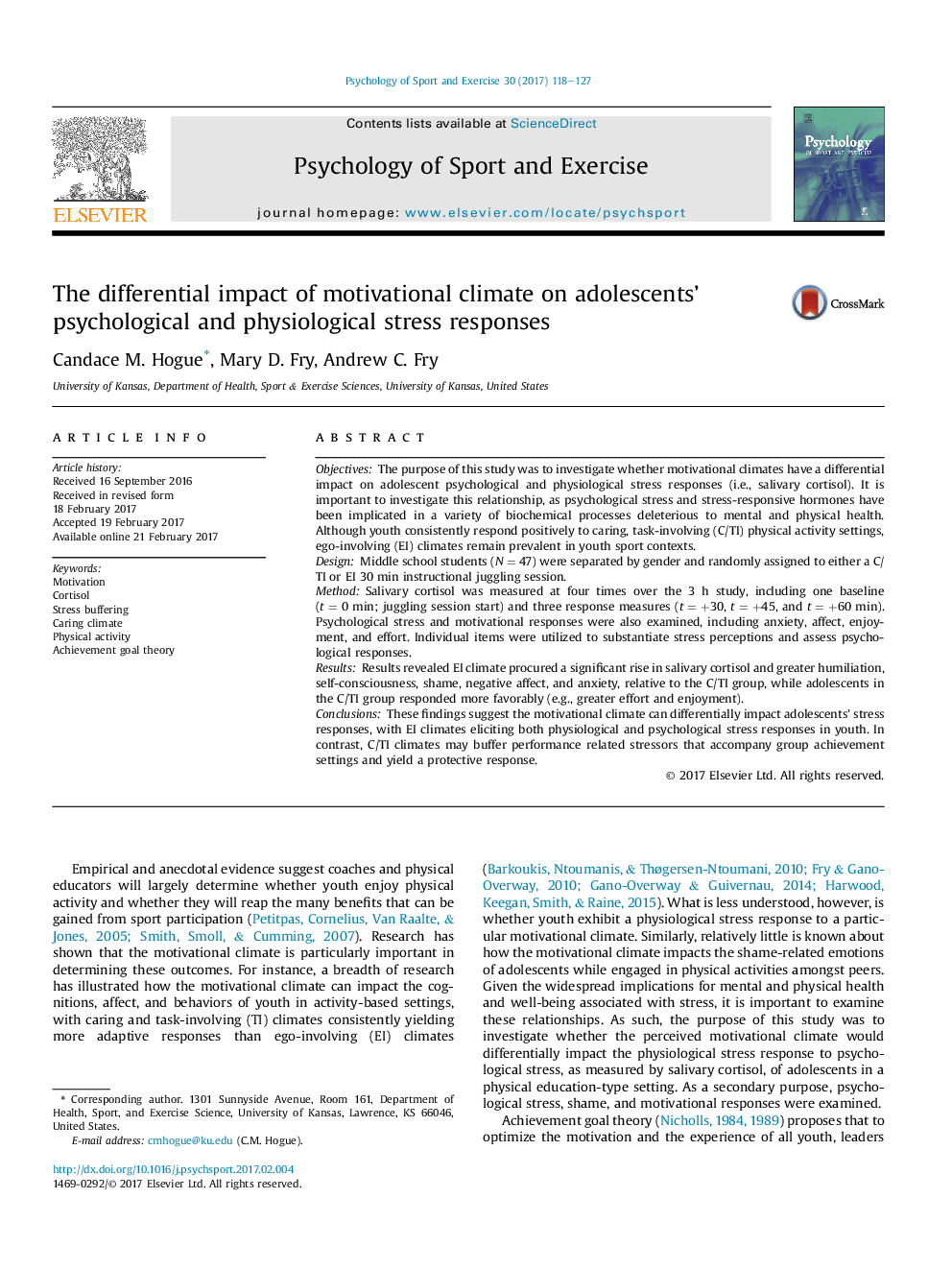| Article ID | Journal | Published Year | Pages | File Type |
|---|---|---|---|---|
| 5036444 | Psychology of Sport and Exercise | 2017 | 10 Pages |
â¢Ego-involving motivational climates (EIMCs) triggered a rise in salivary cortisol.â¢Youth experienced shame and embarrassment while learning a new skill in an EIMC.â¢Youth in EIMCs reported more negative mood states and higher stress responses.â¢Caring, task-involving motivational climates (CTIMCs) elicit protective responses.â¢CTIMC youth reported better moods and higher effort and enjoyment than EIMC youth.
ObjectivesThe purpose of this study was to investigate whether motivational climates have a differential impact on adolescent psychological and physiological stress responses (i.e., salivary cortisol). It is important to investigate this relationship, as psychological stress and stress-responsive hormones have been implicated in a variety of biochemical processes deleterious to mental and physical health. Although youth consistently respond positively to caring, task-involving (C/TI) physical activity settings, ego-involving (EI) climates remain prevalent in youth sport contexts.DesignMiddle school students (N = 47) were separated by gender and randomly assigned to either a C/TI or EI 30 min instructional juggling session.MethodSalivary cortisol was measured at four times over the 3 h study, including one baseline (t = 0 min; juggling session start) and three response measures (t = +30, t = +45, and t = +60 min). Psychological stress and motivational responses were also examined, including anxiety, affect, enjoyment, and effort. Individual items were utilized to substantiate stress perceptions and assess psychological responses.ResultsResults revealed EI climate procured a significant rise in salivary cortisol and greater humiliation, self-consciousness, shame, negative affect, and anxiety, relative to the C/TI group, while adolescents in the C/TI group responded more favorably (e.g., greater effort and enjoyment).ConclusionsThese findings suggest the motivational climate can differentially impact adolescents' stress responses, with EI climates eliciting both physiological and psychological stress responses in youth. In contrast, C/TI climates may buffer performance related stressors that accompany group achievement settings and yield a protective response.
